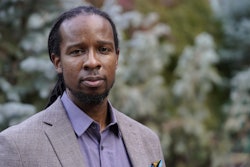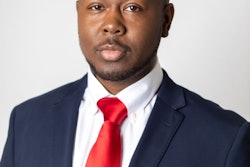I am associated with [the] Chicano Studies [department], where many
people on this campus assume that we do second-rate scholarship and
third-rate research, and that most of us are-fourth-rate teachers….
It is a continuous process of having to prove myself, including to
students.” – Dr. Alex M. Saragoza, University of California Berkeley.
“I think it is the sense that…White people belong on top and they
shouldn’t have to give up anything for anybody. ” – Dr. Nell Painter,
Princeton University
These are just two of the voices heard in a new film that explores
the frustrations, anxieties, and triumphs experienced by scholars of
color in today’s academy.
Shattering the Silences: The Case for Minority Faculty uses a
prime-time, news magazine format which is much livelier than the
plodding cadence of so many documentaries – to depict the role scholars
of color are playing in the arduous process toward diversity on the
nation’s campuses.
The film, which was produced by moviemakers Stanley Nelson and Gail
Pellett, debuted to a national audience on the Public Broadcasting
System (PBS) earlier this year and is now being screened at academic
conferences and on campuses around the country.
“We as filmmakers…feel thrilled that the documentary has a life of
its own and is being used to facilitate an important dialogue on the
issue of diversity,” says Pellett, who has won several awards for
previous documentary work.
Featuring narration by African American actress Lynn Thigpen – who,
among other credits, is the star of the PBS educational television
series Where in the World is Carmen San Diego – the eighty-six-minute
film covers a wide swath of issues, including: the alienation many
scholars of color feel when assigned to campuses in largely White
towns; the relentless pressure of having to prove the merits of their
scholarship long after having achieved tenure; the toll these pressures
have on their personal and professional lives; and the personal
satisfaction scholars of color feel from knowing that they are changing
not only the course of the academy, but the course of history.
Shattering the Silences approaches the highly politicized subject of
affirmative action from the personal perspective of faculty of color,
who, like it or not together with students of color – find themselves
caught at the center of this incendiary debate.
Using narrative and newsreel footage from the campus demonstrations
of the 1960s and 1970s, the film provides a historical context for
campus diversity. Its eclectic soundtrack – which bounds effortlessly
from Nuyorican jazz rhythms (music originated by Puerto Ricans living
in New York), to Mexican rancheros and urban hip hop – provides a rich
cultural backdrop.
“What I try to do is bring some balance because the system has not
been balanced,” says Dr. David Wilkins, a Native American associate
professor of political science at the University of Arizona-Tucson, who
is among the eight scholars featured in the film.
The diverse sampling of professors includes one Asian American,
three Latinos, and three African Americans – each of whose story is
unique, but whose collective experiences are representative of the
kinds of challenges faced by others like them in the academy.
“I think scholars of color have enriched just about every discipline
because of the new questions they’ve asked and the new approaches
they’ve taken,” says Dr. Darlene Clark-Hine, a historian at Michigan
State University. Her own work, which includes several books about the
history of African American women, is offered as an example.
Dr. Shawn Wong, an English professor at the University of
Washington, is another who offers a similar experience. The film
illustrates how – through his own literary contributions as a Chinese
American novelist, and through his original research – Wong has helped
to identify Asian American authors who might otherwise have gone
unnoticed by the academy. By so doing, he has enriched the body of
American literature.
In one scene, Dr. Gloria Cuadras, an assistant professor of American
Studies at Arizona State University, describes the complexity of
emotions that accompanies being the first person in her nuclear family
to achieve such a high level of education. Part of her fear comes from
the realization that her education may have come at the cost of not
having a husband and children of her own. Her tear-filled account of a
conversation she had with her mother the day she finished her
dissertation is among the film’s most moving scenes.
Cuadras is the only one of the film’s scholars who is not tenured.
Pellett says that was not the initial plan. “We initially thought we’d
focus on junior faculty only,” she says. But after months of research,
it was decided that tenured professors were not only more eloquent on
the issues, but they could speak with greater impunity.
“We realized that those with more experience had more to say,” adds Pellett.
Although the filmmakers were careful to select a group of professors
who were diverse in age and ethnicity, they neglected to include the
perspective of those within the physical science disciplines. It is an
unfortunate omission.
Nevertheless, Shattering the Silences makes a compelling case for
diversity. It is a lot to view in one sitting, but the structure lends
itself to segmented screenings, which are more suitable for meetings or
classroom settings. This film that should be added to the required
screenings lists of scholars, administrators and students alike.
For more information about Shattering the Silences, contact
California Newsreel, 149 9th St./420, San Francisco, CA 94103; or phone
415-612-6196. The fax number is 415-621-6522. The Web site address is,
http//www.newsreel.org; and the e-mail address is
[email protected].
COPYRIGHT 1997 Cox, Matthews & Associates
© Copyright 2005 by DiverseEducation.com


















